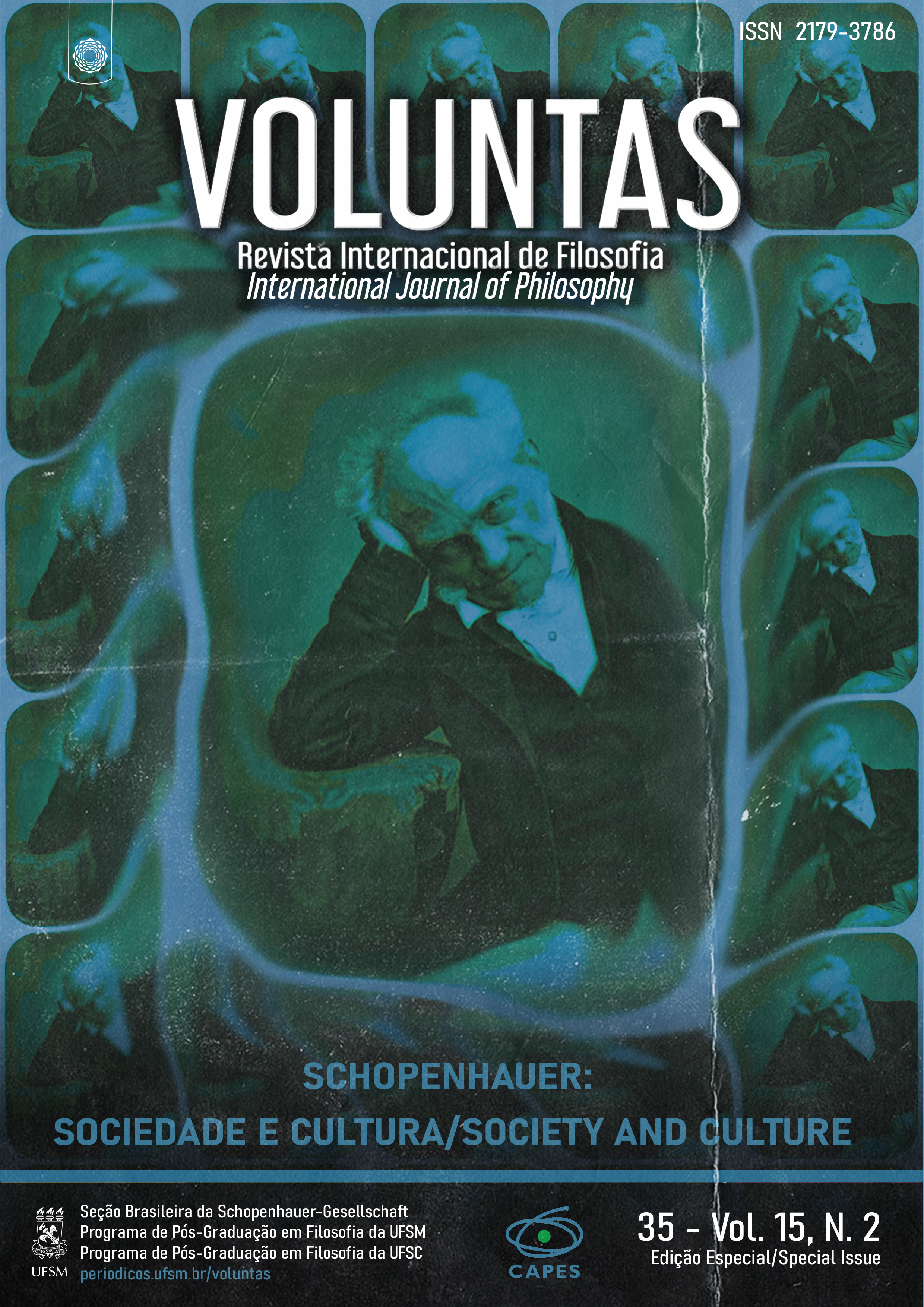Metaphysics and Morality in Schopenhauer's Work: The Moral Significance of the Worst of All Possible Worlds
DOI:
https://doi.org/10.5902/2179378689962Keywords:
Metaphysics, Morality, SchopenhauerAbstract
The article explores the apparent contradiction in Schopenhauer's work between moral meaning and the diagnosis of the "worst of all possible worlds." The philosopher asserts compassion as the sole universal and concrete moral foundation by rejecting transcendentalism and the intervention of a God or supreme intelligence. Compassion emerges as a universal moral principle, alleviating suffering and fostering solidarity amid the "war of all against all." Although often associated with quietism and conservatism, Schopenhauer's thought also reveals transformative potential by emphasizing the disruptive power of morality and art, which illuminate pathways for action and coexistence, even in the worst of worlds.
Downloads
References
LAZARINI, Lucas. A atualidade de Schopenhauer segundo Horkheimer. Voluntas: Revista Internacional de Filosofia, [S.l], v. 9, n. 2, p. 190-208, 2018.
NIETZCHE, Friedrich. A Gaia Ciência. Trad: Paulo César de Souza. São Paulo: Companhia de Bolso, 2012.
SCHOPENHAUER, Arthur. Sobre a filosofia universitária. Trad: Maria Lúcia Cacciola e Márcio Suzuki. São Paulo: WMF Martins Fontes, 2023.
SCHOPENHAUER, Arthur. Parerga e Paralipomena. In: SCHOPENHAUER, Arthur. Sobre a ética. São Paulo: Hedra, 2012. p. 108-220.
TURNER, William. O navio negreiro. Boston: Museu de Belas Artes de Boston, 1840.
Downloads
Published
How to Cite
Issue
Section
License
Copyright (c) 2024 Maria Lúcia Mello e Oliveira Cacciola

This work is licensed under a Creative Commons Attribution-NonCommercial-ShareAlike 4.0 International License.
The submission of original manuscripts to this journal implies the transference, by the authors, of the copyrights for printed and digital publication. The copyrights of a published manuscript belong ultimately to the author, and only the copyright for its first publication is reserved to the journal. Authors may only use the same results in other publications explicitly indicating this journal as the medium of the original publication.
Licence
Attribution-NonCommercial-ShareAlike 4.0 International (CC BY-NC-SA 4.0) - This license lets others remix, tweak, and build upon your work non-commercially, as long as they credit you and license their new creations under the identical terms.






